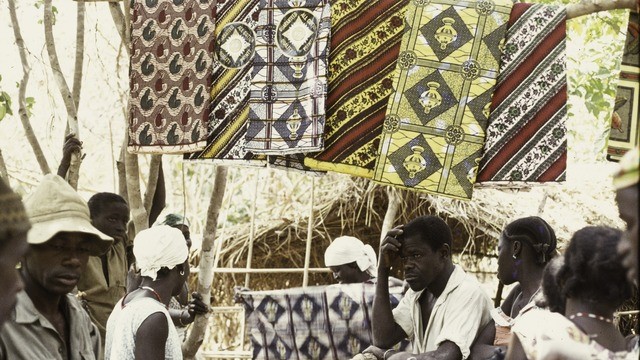In the workshops and open-air markets of Guinea-Bissau, tradition takes tangible form. Woven textiles ripple with bold colors, clay vessels dry slowly in the sun, and woodcarvings emerge from blocks of timber into intricate figures. The country’s artisans, working quietly but persistently, sustain practices that reach back through generations, turning everyday materials into cultural touchstones.
Across this West African nation, craftsmanship varies by region and community. Among the Balanta, vibrant textiles carry patterns tied to agricultural cycles and social identity. On the Bijagós Islands, sculptors and carvers create ceremonial objects linked to rituals honoring deities and ancestral spirits. Potters, often women, mold clay into vessels that serve both practical and ceremonial purposes. In each case, the work is never merely decorative; it embodies history, belief, and collective memory.
The passing down of these skills remains central to their survival. Older artisans teach children and apprentices not only the techniques of weaving or carving but also the narratives embedded in each object. A textile, for example, might carry motifs that recall migration, conflict, or celebration. Through this transmission, cultural knowledge travels from one generation to the next, anchoring identity in the face of rapid change.
Markets and workshops offer a glimpse of this process at work. The slow, repetitive rhythm of the loom, the careful shaping of clay, or the deliberate cuts of a carver’s blade all reveal a blend of patience and precision. These crafts are labor-intensive, yet they are also communal, often produced in family settings or small collectives where artistry is inseparable from daily life.
Globalization, though a force of disruption, has also sparked adaptation. Some artisans now blend traditional motifs with modern aesthetics, creating hybrid designs that appeal to international buyers without abandoning their cultural roots. Wooden masks may find new expressions in contemporary forms; textiles incorporate fresh palettes while retaining symbolic patterns. This evolution underscores both resilience and creativity, ensuring that the crafts remain relevant while honoring their origins.
Economic stakes are considerable. Handmade goods provide vital income in a country grappling with persistent poverty and political fragility. For artisans, each sale represents not only livelihood but also affirmation that their traditions retain value beyond the community. The growth of fair-trade networks and ecotourism initiatives has created new markets for these crafts, linking local workshops to global demand.
More than commodities, however, these works remain embodiments of cultural identity. A carved figure or handwoven cloth carries the imprint of an individual maker but also of a collective heritage that resists erasure. In Guinea-Bissau, the survival of craft traditions is not nostalgic preservation—it is an assertion of presence in a rapidly shifting world.
Sources
- Mendy, Peter Karibe. Historical Dictionary of the Republic of Guinea-Bissau. Scarecrow Press, 1996.
- Lopes, Carlos Cardoso. “Culture and Identity in Guinea-Bissau.” Africa Today, vol. 38, no. 2, 1991, pp. 33–45.
- United Nations Educational, Scientific and Cultural Organization (UNESCO). “Traditional Crafts of West Africa.” UNESCO, 2023.
- Forrest, Joshua B. Guinea-Bissau: Power, Conflict, and Renewal in a West African Nation. Westview Press, 1992.


